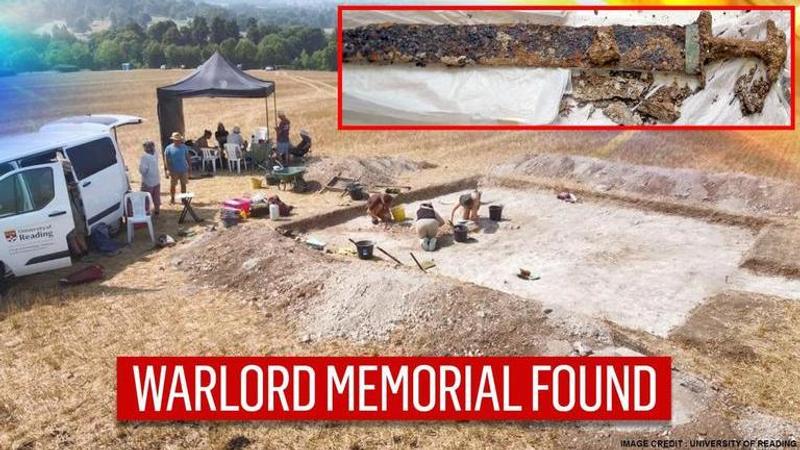Published 20:37 IST, October 6th 2020
Marlow Warlord's burial uncovered, could 'redraw map of post-Roman Britain'
Archaeologists have discovered a warrior burial in Berkshire that could change the historians’ understanding of southern Britain in the early Anglo-Saxon era.

Having the potential to change the historians’ understanding of southern Britain in the early Anglo-Saxon era or post-Roman time, Archaeologists have discovered a warrior burial in Berkshire, UK. As per the detailed research led by University of Reading's archaeology department, the burial which was uncovered on a hilltop site near with commanding views over the surrounding Thames valley should be a high-status warlord from 6th century AD. The ‘Marlow Warlord’, the archaeologists believe, was a “commanding, six-foot-tall man, buried alongside a range of expensive luxuries and even weapons.
These weapons included a sword in a decorated scabbard, spears, bronze and glass vessels, along with other personal accoutrements. The Marlow Warlord burial remained undiscovered as well as undisturbed for over 14,00 years until 2018 when Sue and Mick Washington, two metal detectorists came across the site. Dr Gabor Thomas, from the University of Reading, has said that it is nature and site of the pagan’s burial makes the experts believe he must be a “respected leader”.
"The nature of his burial and the site with views overlooking the Thames suggest he was a respected leader of a local tribe and had probably been a formidable warrior in his own right" - Dr Gabor Thomas.
Cave art in Australia
Meanwhile, in Australia, researchers have discovered an entirely new style of ancient art showing humans and nature in harmony in the vast wilderness. The previously undescribed ‘Maliwawa Figures’ have been found lining the northwest Arnhem Land which is a historical region in the continent. From Awunbarna (Mount Borradaile area) to the Namunidjbuk clan state of the Wellington Range, researchers have uncovered at least 87 rock shelters having similar solitary figures arranged in compositions and scenes.
However, the newly found Maliwawa Figures, as per the study, are expected to date between 6,000-9,400 years of age. The comprehensive study on this art was put together by scientists and local Aboriginal research partners after a detailed analysis of 572 figures from all 87 sites in the continent. The expansive imagery stretches for 130 kilometres and each figure lays emphasis on the natural world with humanity in it.
Image: @UniRdg_Arch/Twitter
Updated 20:37 IST, October 6th 2020




